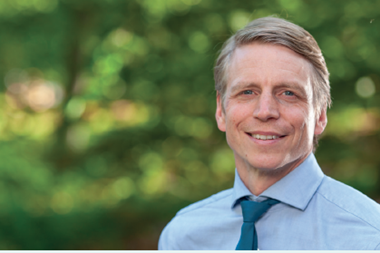The default option used by almost half of savers in Sweden’s first-pillar premium pension system (PPM) should be changed radically, adding long-term strategies and alternative investments, according to a new proposal.
Pensions expert Mats Langensjö presented his government-commissioned report – ‘Default option within the Premium Pension’ – to the Swedish cross-party Pensions Group yesterday afternoon, saying the goal should be to maximise the conditions for a good pension while minimising the risk of bad outcomes for savers.
The report forms part of the ongoing reform process in Sweden to improve the nationwide PPM, which forms the defined contribution part of the state pension.
Among the sweeping changes put forward in Langensjö’s 86-page memorandum is a proposal to align the investment rules for the SEK460.1bn (€43.6bn) AP7 with those for the main pension buffer funds AP1-4.
While AP7 is currently only allowed to invest in equities and bonds, the buffer funds’ rules allow them to invest in real estate, for example, and proposals are currently under way for them to have more leeway to make direct investments and invest in illiquid credit.
Langensjö said: “This is to give the default option greater and better conditions to act as a truly long-term pension fund… The fund is one of the largest pension funds in the world and it will continue to grow strongly over the next 20-30 years.”
Even though the PPM had lived up to its aims of delivering a higher return than the income pension (which is funded by AP1-4 and AP6) and to provide diversification, he said this had occurred during an exceptional period.
In his report, Langensjö stated: “The falling interest rates of the last 30 years have created very favourable conditions for portfolios with a high proportion of shares and real assets. At the same time, the value of bond portfolios has benefited from falling interest rates.
“This, however, means that historical results, more than ever, are irrelevant and difficult to assess in portfolio selection for the future.”
Diversified growth proposal
The proposal advocated making a clear separation between the saving phase and the payout phase of the pension system.
It also called for the default option to be redesigned as a single diversified growth portfolio, with more opportunities for long-term and alternative investment strategies, and with a more flexible approach to daily trading and valuation requirements.
The fund should no longer offer savers the choice of different risk profiles, according to the proposal, with Langensjö arguing that this demand could be met instead by privately-run investment options available on what would eventually be a reformed and procured funds marketplace.
He also suggested that the default fund should in future only be responsible for the savings phase of the premium pension, with the payout phase run in its entirety by the Swedish Pensions Agency. Currently, around 540,000 Swedes draw pensions from AP7’s default option rather than buying an annuity.
Langensjö proposed that AP7 should be removed from the supervision of the Swedish financial regulator, which he said was not appropriate for several reasons.
The amendments are slated to take effect on 1 January 2021, with the two building block funds now managed by AP7 being discontinued by 1 January 2022 at the latest.
Further reading
Interview: Mats Langensjö weighs options for Sweden’s giant AP7
Langensjö spoke to IPE’s Rachel Fixsen earlier this year about his review and the development of AP7
AP7 chief backs calls for illiquids investment permission
The default fund’s investment chief has been calling for additional investment flexibility for more than a year










No comments yet